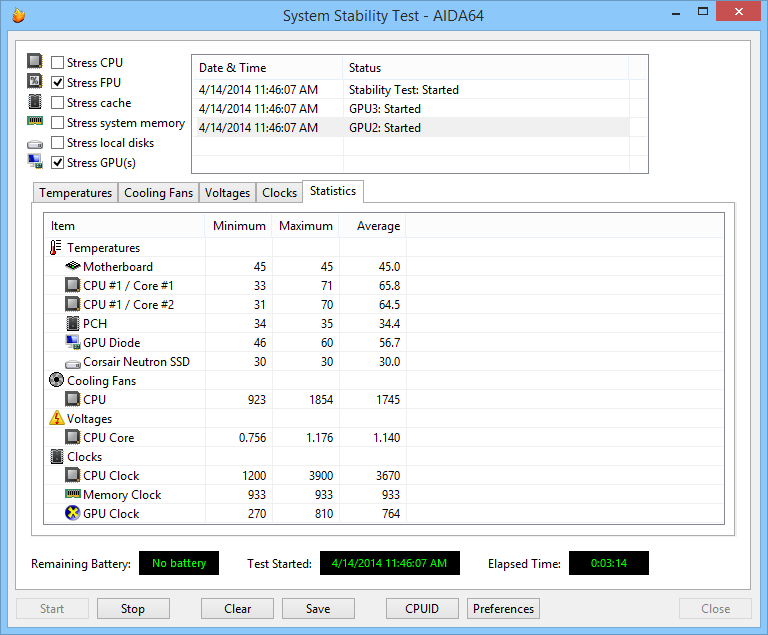

- #Recommended threads for cpu stress test full#
- #Recommended threads for cpu stress test verification#
- #Recommended threads for cpu stress test software#
- #Recommended threads for cpu stress test code#
- #Recommended threads for cpu stress test mac#
I bet this is the smallest correctly formed Elf format binary that can be made to perform this function. After all, this should be fun – not work. I'm definitely not expecting you to produce a multi-core solution. Since the question came up in the comment area… you only need to target 1 CPU core. The winner is the one presenting the most minimal (in size) sourcecode that complies to the above “must” and “must not” conditions. Present the smallest sourcecode possible.
#Recommended threads for cpu stress test verification#
(as long as it allows practical verification of its functionality by running it) may use any programming or scripting language.may use any approach/algorithm/functionality to produce expected 100% CPU load.(Proposing shortcuts in the likes of system('cpuStressThing.exe') disqualifies your proposal.) must not use 3rd-party programs or tools which replace expected functionality.(Even a hamster could stress a Comodore64… therefore, you must target a current operating system.)

#Recommended threads for cpu stress test mac#
#Recommended threads for cpu stress test code#
Half of the boids systems use the SSSE3 code path. The boids use a simple, highly optimized simulation. The main component of the test workload is an implementation of a boid system to simulate flocking behavior. Test workloadĮach CPU Profile test features custom simulations. With Custom run settings, you can choose to include or exclude each of the six tests in the benchmark run. For games and real-world use cases, however, the multithreaded scores are usually a better indicator of practical performance. The 1-thread score is a fundamental measure of the processor's performance. The frame rates of popular esports titles such as Dota 2, League of Legends, and Counter-Strike: Global Offensive usually correlate with the 2-threads or 4-threads score. Older games developed for DirectX 9 are often bottlenecked by the CPU on modern gaming PCs. This score also has a high correlation with the 3DMark Time Spy CPU score. The gaming performance of a CPU usually correlates most closely with the 8-threads score.

Modern DirectX 12 games make better use of multithreaded performance beyond 4 cores. 16 threadsĬomputationally intensive tasks such as digital content creation and 3D rendering benefit from more threads.
#Recommended threads for cpu stress test software#
The practical use cases for this score lie in heavy, multithreaded workloads such as 3D rendering, audio and video production, and software development.
#Recommended threads for cpu stress test full#
The Max-threads score represents the full performance potential of your CPU when using all available threads. For this reason, the 3DMark CPU Profile should not be used as a long-running stress test. Short breaks for loading and saving between tests ensure that the CPU is able to cool down between tests. The 3DMark CPU Profile benchmark is designed to stress the CPU at different levels of threading while minimizing the GPU workload to ensure that GPU performance is not a limiting factor. All six tests use the same workload it is only the amount of threading that changes, with tests limited to using either 1, 2, 4, 8, 16, or the maximum number of available threads. It includes six tests that feature custom simulations. The 3DMark CPU Profile measures CPU performance. Solution home 3DMark CPU Profile CPU Profile tests


 0 kommentar(er)
0 kommentar(er)
